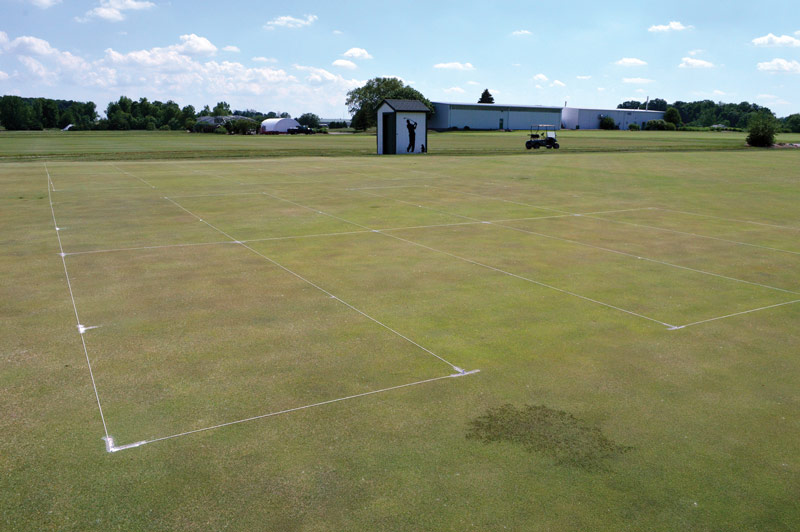
Photo by Jackie Guevara
A soil testing philosophy is used to interpret soil test values to make nutrient recommendations. Two philosophies used in turfgrass management are Sufficiency Level of Available Nutrient (SLAN) and Minimum Levels for Sustainable Nutrition (MLSN).
A study was conducted at Michigan State University from 2019 to 2020 to compare the effects of SLAN and MLSN nutrient recommendations on creeping bentgrass and annual bluegrass putting greens. Soil samples were collected in the spring and autumn. Turfgrass color, quality and normalized difference vegetation index (NDVI) were measured biweekly.
In 2019, phosphorous (P) and potassium (K) recommendations from the SLAN philosophy were 4 and 4½ times higher than recommendations from the MLSN philosophy, respectively. In 2020, nutrient applications were adjusted based on soil tests from the autumn of 2019. The amount of recommended P from the MLSN and SLAN philosophies was the same, but the amount of recommended K from the SLAN philosophy was three times greater than that from the MLSN philosophy.
In 2019, there were no differences among treatments for NDVI, color and quality, but the SLAN philosophy had the highest soil P and K levels by the end of the growing season. In 2020, both philosophies exhibited higher turfgrass quality and healthier turfgrass color compared with the nitrogen-fertilized control. SLAN philosophy had the highest soil P level, but there were no differences in soil K levels between the two philosophies in autumn of 2020.
Overall, no significant differences were found between SLAN and MLSN nutrient recommendations for turfgrass color and quality.
Watch: Master’s student Jackie Guevara discusses this research at a 2020 Michigan State University virtual field day:
— Jackie Guevara and Kevin Frank, Ph.D., Michigan State University, East Lansing, Mich.
Andrew Hartsock is GCM’s managing editor.